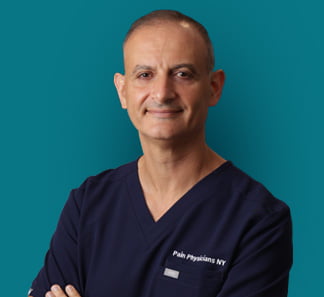Everyone gets a headache from time to time. But cervicogenic headaches aren’t like other headaches. They’re often caused by an underlying medical condition, and that usually means the cause, not just the symptoms, can be treated. Visit Pain Management NYC in Midtown Manhattan for the most trusted and respected pain specialists in New York City. They help you return to your previous lifestyle without pain.
There are many types of headaches and every type has the potential to appear different. It’s difficult, therefore, to determine what’s causing your headache just from your pain. If you’re having headaches that are related to neck pain, for example, then you’re likely experiencing cervicogenic headaches.
Like other types of headaches, cervicogenic headaches can have different causes. Thankfully, pain management doctors in NYC are conveniently located in Midtown Manhattan at NYC pain clinic. They have the medical knowledge, practiced skills and dedicated compassion to diagnose the source of your discomfort and help you move past your pain.
Symptoms of Cervicogenic Headaches

- Pain that seems to focus on one side of your head or face
- Pain when you cough, sneeze or inhale deeply
- A steady, non-throbbing pain
- Pain that seems to radiate from one spot of your head or eye
- Stiffness in your neck that hinders your normal range of motion
- Your pain lasts for hours or days without going away
Cervicogenic headaches differ from migraines, but many of the symptoms are remarkably similar. For example, symptoms of both may include:
- Nausea
- Shooting pain in one shoulder and arm
- Light sensitivity
- Blurry or doubled vision
- Increased sensitivity to sound
Anatomy of Your Pain
Problems with your neck and spine are common if your career requires that you stand in the same position for periods of time. At risk are drivers and hair stylists. Some ways of holding your head or standing can put extra stress on your upper back and on your neck.
Spinal compression or pinched nerves can produce similar symptoms. It takes a practiced pain management doctor to determine the cause of your headaches and other pain. Conditions that produce similar symptoms to cervicogenic headaches include:
- Arthritis
- Whiplash
- Neck injury or shoulder injury
- Compression fractures
- Tumors
Getting to the Source
Your pain doctor conducts a through physical exam and evaluation of your medical history to figure out the reason for your headaches. He asks questions about which activities set off your headaches. He asks you to explain where you feel the pain and how much it hurts. Include details such as:
- If your headaches get worse with time
- If you’ve recently suffered any trauma
- If you get a rash or fever when your headaches hit
These details may be indicators of medical problems that require more immediate attention. If you ever experience sudden sharp pains in your head or severe bouts of dizziness, seek emergency medical attention. But the top pain clinic in New York uses the most advanced diagnostic equipment available in the U.S. to fully access your condition. Diagnostic tests include:
- X-rays, to take clear pictures of your neck and spine structures
- Magnetic resonance imaging (MRI) scans, which produce highly-detailed images of your head
- Computerized tomography (CT scans), used to take a series of advanced x-rays from many different angles
After the tests your doctor deems appropriate, he reaches a diagnosis and determines a course of cervicogenic headache treatment for your specific case. Most often, you start with the least invasive and most conservative treatment.
Cervicogenic Headache Treatments
Your best pain relief doctors in NYC discusses the available cervicogenic headache treatment options with you. It is possible to significantly reduce your pain — and in some cases, eliminate it entirely. Treatment options include:
- Muscle relaxers and non-steroidal anti-inflammatories can help ease your pain symptoms, at least temporarily. Low-dose opioids are used when appropriate.
- Spinal manipulation. Physical therapy helps correct any alignment issues that can be the underlying cause of your headaches.
- Nerve block injections. These medicated injections are an excellent treatment option for temporary relief, especially while you engage in physical therapy for a more lasting solution.
- Minimally invasive surgery. The most severe cases of cervicogenic headaches may require surgery. Your pain management doctor only suggests this as a last resort when other treatment options have failed to resolve your pain.
You always have options when it comes to eliminating pain from your life. Chronic pain is life-altering. Acute pain limits your quality of life. Contact Pain Management NYC for an accurate diagnosis and positive care. Get out of pain today!

Boleslav Kosharskyy, MD, is a top-rated, best-in-class interventional pain management doctor. He is board-certified in Anesthesiology, Interventional Pain Medicine, and Palliative Care.
Dr. Kosharskyy is an Associate Professor of Anesthesiology and Rehabilitation Medicine at Albert Einstein Medical College. He’s also the Associate Medical Director of Pain Medicine and Director of Anesthesia for the Joint Replacement Center at Montefiore Medical Center and Albert Einstein Medical College.
He is an active member of the American Society of Anesthesiology (ASA), the American Society of Regional Anesthesia and Pain Medicine (ASRA), and the New York State Society of Anesthesiologists (NYSSA)
